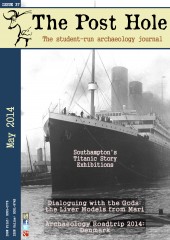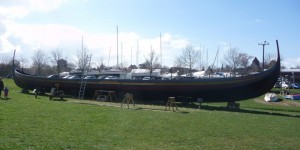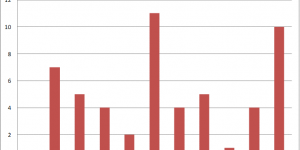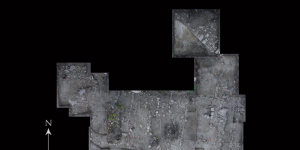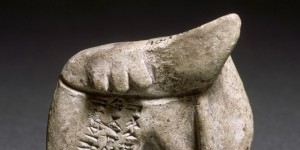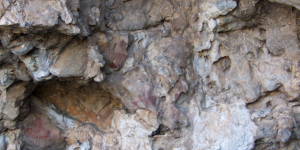As I was sat the other day with course mates in our regular retreat and second home – the library – the TV series 'Restoration, Restoration, Restoration' was brought up in conversation. When debating what to discuss within my editorial, I pondered about this topic long and hard. A controversial matter, I wondered if any of our readers could remember this TV series, first aired in 2003. For those who are unaware, the series involved a number of different listed buildings competing for the viewer’s decision as to who would receive a grant from the Heritage Lottery Fund in order to meet their immediate conservation needs. Aired between 2003-2009, a selection of winners included the Turkish-bath section of the Victoria Baths in Manchester, Old Grammar School and Saracen's Head in Kings Norton, Birmingham, and Chedham's Yard, an early 19th-century blacksmith's yard. A series of spin-offs were created on similar topics. However, discussing this the other day led me to the question of whether this is an appropriate method of obtaining funding?
Within my dissertation I discussed the uncertainty faced within the museum and heritage sector, and how these organisations, in the face of funding cuts, are looking for new sources of funding and sponsorship. Evidently ‘Restoration, Restoration, Restoration’ incorporates the public, a major investor in the future; however I wanted to question the ethics behind it. The three series in total were hosted by Griff Rhys Jones, the Welsh comedian, writer, actor and television presenter. They also included the involvement of Marianne Suhr, a English Chartered Building Surveyor, writer and expert on historic buildings, and Ptolemy Dean, a British architect specialising in historic preservation and the 19th Surveyor of the Fabric of Westminster Abbey. The involvement of specialists, I think, elevates the programme from the status of a simple restoration programme into a series that incorporates important themes present within society, raising awareness of the listed buildings’ profiles and educating and involving the public. It would be interesting to hear some of your thoughts on this matter; it might even spark you to write an article in support of or in disagreement of what I have said. If you would like to discuss the matter further, either email editor [at] theposthole.org, voice your opinions via Facebook or Twitter or send submissions to our Submissions Editor, Taryn Bell, at submissions [at] theposthole.org.
Dissertations are in, the end of academic term is slowly creeping nearer, fieldwork and summer school opportunities are being decided and, for some of us, big decisions are to be made surrounding the ‘next step’. Our previous issue, issue 36, combined March and April to compensate for university deadlines, and the team are pleased to announce the release of this issue and two ‘Digging through the Profession of Archaeology’ interviews. The past month has been extremely busy for the team, juggling the demands of university against other commitments and The Post Hole, whilst organising the next team to step up once we graduate.
Within this issue there are five interesting and very different articles. You may recognise the author of the first article, Jim Grant who also produced ‘The Archaeology Coursebook’ and taught me AS and A-level archaeology at Cirencester College. Grant’s account of the yearly archaeology trip is a fantastic insight into the wonders of studying archaeology at AS and A-Level and of the different opportunities that can be explored in Denmark.
Malgorzata Radomska provides us with an interesting take on the ‘Public perceptions and attitudes to the ‘Southampton’s Titanic Story’ exhibition at the Sea City Museum’. Covering such a well-known topic is always tricky, however Radomska looks at the exhibition from all angles, focusing on visitor experiences, a key element in determining the success and response to exhibitions within museums.
Alistair Galt, our PR coordinator at Southampton University, builds upon a previous article written for us by Robert Barratt last year, ‘The Use of Photogrammetric Models for Recording of Archaeological Features’ (which can be accessed via https://www.theposthole.org/read/article/237), and his own blog post ‘3D Modelling for Archaeologists’ posted on the 14th April 2014 (to view, please follow www.archserve.blogspot.co.uk), to produce ‘It’s all Fun and Games to You, isn’t you? The New Technology by the ‘New Generation’ in Archaeology’. A thought provoking article, it would be interesting to get some papers in response to this.
Discussing divination and the role of the liver, Emilio Passera discusses ‘Dialoguing with the Gods: the Liver Models from Mari’. In a unique article, liver models give a glimpse into Mesopotamian society and societies in Babylon, Mari, Hattusa and Etruria, revealing not only symbolic and ritual aspects, but trade and communication within a complex network spread across the globe.
Issue 37 draws to a close with another fabulous and stimulating article by Arnaud F. Lambert. Having written for us before in issues 26, 27, 29 and 32, Lambert is becoming one of our most supportive and continuous authors, and we appreciate greatly all he does for The Post Hole (his work can be accessed via https://www.theposthole.org/archive). Lambert’s article builds upon his other work, this time focusing upon ‘Cave Imagery in the Non-Olmec Rock Art of Oxtotitlán, Guerrero, Mexico’.
We hope you enjoy this issue and apologise for the delay of this release. In July, we will be handing over to the next team, and if you feel you would like to become part of The Post Hole and its exciting role as the first archaeological undergraduate journal within the UK, please do not hesitate to get in contact. Please continue sending your submissions into submissions [at] theposthole.org and any questions to myself at editor [at] theposthole.org.
Best wishes,
Emily Taylor
(Editor-in-Chief of The Post Hole - editor [at] theposthole.org)



